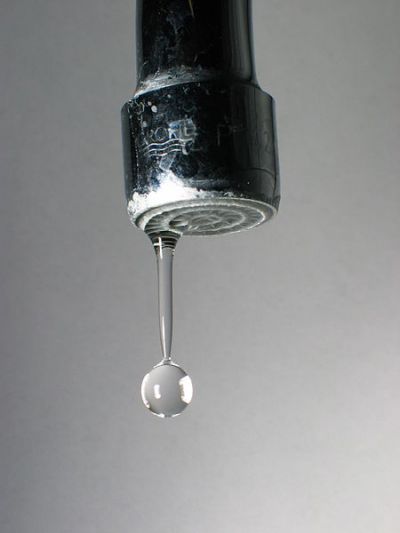The quality and the quantity of fresh water resources face increasing challenges in many parts of Europe. Climate change, rapid population growth and urbanistion, diminishing freshwater resources, and ageing infrastructure are all taking their toll on our water supply.
Whilst our population is rapidly
increasing, water resources have remained constant, and are increasingly
polluted. Supply and demand are out of kilter, and this is set to
continue: it's estimated that the global demand for water will surpass
its availability by 56 percent by 2025. Already 18 percent of Europe's
population live in countries that are 'water stressed' (demand exceeds
availability by more than 20 percent). The overall message is that we
are all using more and more water, and a shocking one third of it is
actually being flushed down our toilets.
It's clear that improved water conservation, methods for managing
water demand and technologies to reduce water wastage are urgently
needed. In an attempt to address this, TRansitions to the Urban Water
Services of Tomorrow (TRUST), an EU-funded water research project, has
recently produced a guide for water stakeholders working on these
issues. 'Guidance on evaluation and selection of sustainable water
demand management technologies', offers direction on the evaluation and
selection of Water Demand Management (WDM) type technologies for the
reduction of water consumption.
Dr. Aisha Bello-Dambatta and Professor Zoran Kapelan from the
University of Exeter in the UK, key authors of the report, noted, 'The
main reason for developing our guidelines was to enable a better
management of overall water demand from source to tap, i.e. water
abstracted from the natural environment, treated, stored, transported,
and eventually distributed to water consumers [...] Our guidelines
provide a lot of technical details and selection guidance for a wide
range of water saving technologies, targeting both domestic and
industrial water consumption, and cover a broad spectrum of WDM
options.'
The authors added, 'The specific target audience for our guidelines
are water service providers (WSPs), policy makers, local authorities and
household water users. Having said this, different stakeholders have
different objectives and priorities, which cannot be considered in
isolation so basically all water stakeholders can benefit from our
guidelines.'
Completed with additional input from the colleagues at University of
Exeter, Fachhochschule Nordwestschweiz in Switzerland and National
Technical University of Athens in Greece, the guidelines seek to empower
water stakeholders to encourage the efficient and sustainable use of
water in order to ultimately balance supply/demand and ensure the
security of future water supply. The TRUST project, which encompasses 30
partners in eleven different countries, is also researching a range of
other innovations and tools with the aim of creating a more sustainable
water future.
Source: IWW Water Centre
Reference documents: Based on information from TRUST

